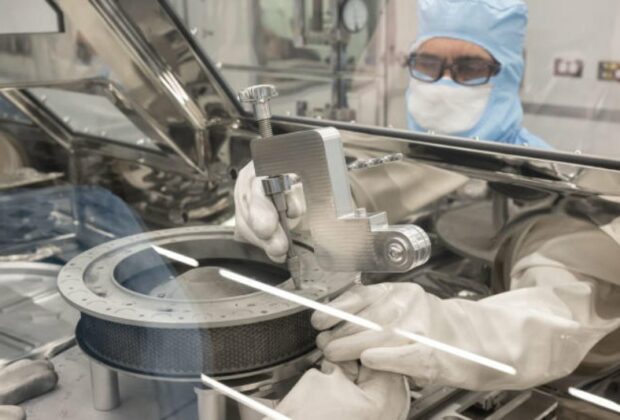In order to disclose the elements that the NASA crew extracted from an asteroid, the space agency announced on Friday that two “stubborn” bolts on the lid of a return capsule from its OSIRIS-REx probe had finally been removed.
In September, OSIRIS-REx came to a conclusion of its historic four billion-mile, seven-year mission to gather samples from the space asteroid Bennu, which is thought to be rich in carbon.
Two out of the 35 bolts on the return capsule’s lid were jammed, making it impossible for the astromaterials curation team at NASA’s Johnson Space Center in Houston to reach the majority of the 2.48 ounces (70.3 grams) of asteroid material that they had extracted. Before, the team was unable to remove the fasteners inside the OSIRIS-REx glovebox using the tools that were authorized for use there.
The remaining asteroid material contains dust and boulders up to around 0.4 inch (one cm) in size, the space agency said, adding that the sample’s final mass will be established in the coming weeks.
Later this year, a catalog containing every Bennu sample will be made available. NASA added that it will accept requests from academic institutions and scientists worldwide to use the materials for research or to showcase the debris from asteroids.
After its successful mission, researchers launched OSIRIS-REx on a second mission to the asteroid Apophis, which is predicted to pass by Earth in 2029 at a distance greater than any other asteroid of comparable size in recorded history.
Renamed OSIRIS-APEX (Origins, Spectral Interpretation, Resource Identification, and Security – Apophis Explorer), NASA reports that the spacecraft would descend to a height of 16 feet on the asteroid and use thrusters to propel itself there, kicking up dust and debris that will provide a view of the asteroid’s interior for scientists.








